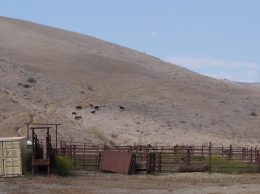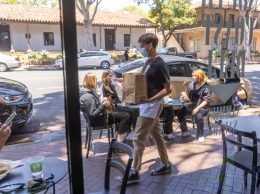The Central Coast is proving — along with much of California — that social distancing and restricted activity can bend the curve of the coronavirus pandemic.
But the battle is far from over and there are troubling signs that the disease will double back with a vengeance once the rules are relaxed.
At press time, San Luis Obispo County was seeing flat to slow growth in new cases and while still growing, Ventura County was beginning to flatten the curve. Santa Barbara County cases were still rising dramatically, particularly in Lompoc and northern Santa Barbara County — just as they had done earlier in Simi Valley and SLO County.
But for the tri-county region, our cases per 100,000 — a key metric that allows for comparisons across metro areas — are relatively low. And with just six deaths, that’s an enviable record given that our population is 1.4 million.
However, as Gov. Gavin Newsom has pointed out, the fact that California seems to be bending the curve does not mean that the end is in sight. There are two reasons for this. First, the much-anticipated apex in new cases is really only the mid-point in the pandemic and its impact on humans.
Second, by flattening the peak, we are extending the time during which populations will be at risk, and so the number of cases will continue to climb after the peak is reached. The slope downward will be longer and more gradual but the toll will continue to rise.
An advantage to California’s response is that it reduces the pressure on the health care system, providing a lot more time to increase the supply of protective gear and spreading out demand for ventilators, allowing the Golden State to ship out some capacity.
That amount of time could prove crucial, if as is being discussed, we are able to use temperature sensing, anti-viral drugs and advanced treatments to reopen schools and get businesses back up and running before a vaccine appears. It would not surprise us to see the state order 100 million tests so that every Californian could get a risk assessment as part of the reopening process.
One downside of extending social distancing rules and stay-at-home orders is that it places families in social isolation, raising the risk of abuse and violence against women and children. A news conference by Santa Barbara County District Attorney Joyce Dudley, Sheriff Bill Brown and others put a spotlight on this issue — it is a serious one and it will be up to family members and others to say something if they are concerned about a family member’s welfare.
STORMS KEEP DROUGHT AT BAY
Far back in the rear view mirror is the memory of the severe drought that afflicted the region just a few years ago.
Before ending in the 2017-2018 season, the drought brought California and the Central Coast to the brink of disaster, with wells running dry in Paso Robles and parts of Ventura County. The drought prompted draconian state action in the form of mandatory restrictions.
Drought threatened a bit of a comeback this year but rains in March and April have taken SLO County out of its drought status. Rainfall has been less in Santa Barbara and Ventura counties, but reservoirs are refilling and, for once, the worst case scenario has been delayed for at least another year.






 Print
Print Email
Email

















